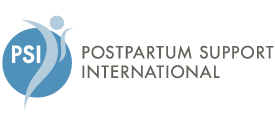A Plague of Invisibility: Bisexual Parents in Modern Society

Imagine your textbook American family: one dad, one mom, and 2.5 kids with a picket fence and a pet.
The default assumptions from this picture aren’t really an accurate representation of the range of American families. While the visibility of 2SLGBTQIA+ people has been steadily increasing over the past two decades, there persists an unfortunate phenomenon:
Parents of different genders are assumed to be heterosexual.
There’s several reasons behind this, from a historical perspective. Before assisted reproductive technology became readily available, such as in vitro fertilization, donor sperm, and gestational surrogacy, it was more accessible and less expensive to have a baby through intercourse with someone of the opposite sex. It was also socially reinforced that heterosexual relationships were accepted above homosexual ones, through restrictions on marriage and other legal rights.
A bisexual person having a baby within a straight-passing relationship risks rendering their queerness invisible. Bisexuality as a concept originally operated on the assumption that there is a gender binary, meaning that all people identify exclusively as a man or a woman–but gender’s diversity and possible fluidity render this term more ambiguous. Bisexuality can encompass a wide variety of romantic and/or sexual attraction, behaviors, or relationships with people of more than one gender. Other terms that often overlap with plurisexual identities–an academic term–are pansexual or omnisexual, which acknowledge gender diversity beyond a binary.
How does bisexuality relate to parents and their mental health? More than you would expect.
Bisexual birthing people often experience a sense of loss of identity when having a baby, because they are often assumed to be heterosexual or “straight”. The next question becomes, what can we do about it, as fellow parents and caregivers?
- Increase representation of bisexual parents in the media you and your family consume. Remember, the more we are exposed to something, the more likely we are to have meaningful conversations about it. It also increases the chances that people around you will be more comfortable with disclosing their identity.
- Identify biphobia and other biased attitudes towards people who are attracted to more than one gender. Sexuality is often fluid, and people may discover that their sexuality has changed, even later in life. Be open to the idea that bisexuality is a common and valid identity.
- For academic and research purposes, differentiate between same-sex gay couples and heterosexual couples, by identifying the sexual orientations of each partner. The literature on bisexual parents is scant, at best. We aren’t collecting this data at all for fathers, and much less on mothers and birthing people. If we don’t have the information, we can’t take better care of people.
- Anticipate and advocate for family diversity. While families come in all shapes and sizes, bisexual parents are more likely than parents of any other demographic to engage in nonmonogamy. From a practical perspective, this means that there may be more than two parents involved in child rearing, or multiple partners supporting a pregnant person. Recognize that hospital policies, like limitations on visitors, often disproportionately affect these families. Intake documents may not allow patients to disclose family structure easily, either. Whatever steps you can take to acknowledge this diversity makes for a safer environment for nonmonogamous and other nontraditional families.
- Create mental health resources for 2SLGBTQ+ parents and their partners. Bisexual parents tend to have better mental health outcomes when connected to queer community, because of the unfortunate phenomenon of bisexual erasure in parenthood. Creating resources, like peer support or affinity groups, which serve as safe spaces for these individuals can create a sense of community and wellbeing that they are otherwise struggling to find in today’s society.
In conclusion, whether you’re a parent, a healthcare worker, a therapist, or just an ally, the most important thing you can do is to recognize what Walt Whitman so eloquently stated: We contain multitudes. Being a parent has very little to do with identity, beyond simply wanting to build a family.
PSI Queer and Trans Resource Page
Outside of their work with ISHP, Featherstone is the founder of Eucalyptus Health, which caters to the mental health care of perinatal and LGBTQ+ individuals. They also organize for their local perinatal mental health coalition, and teach on sexuality, eating disorders, and gender.
